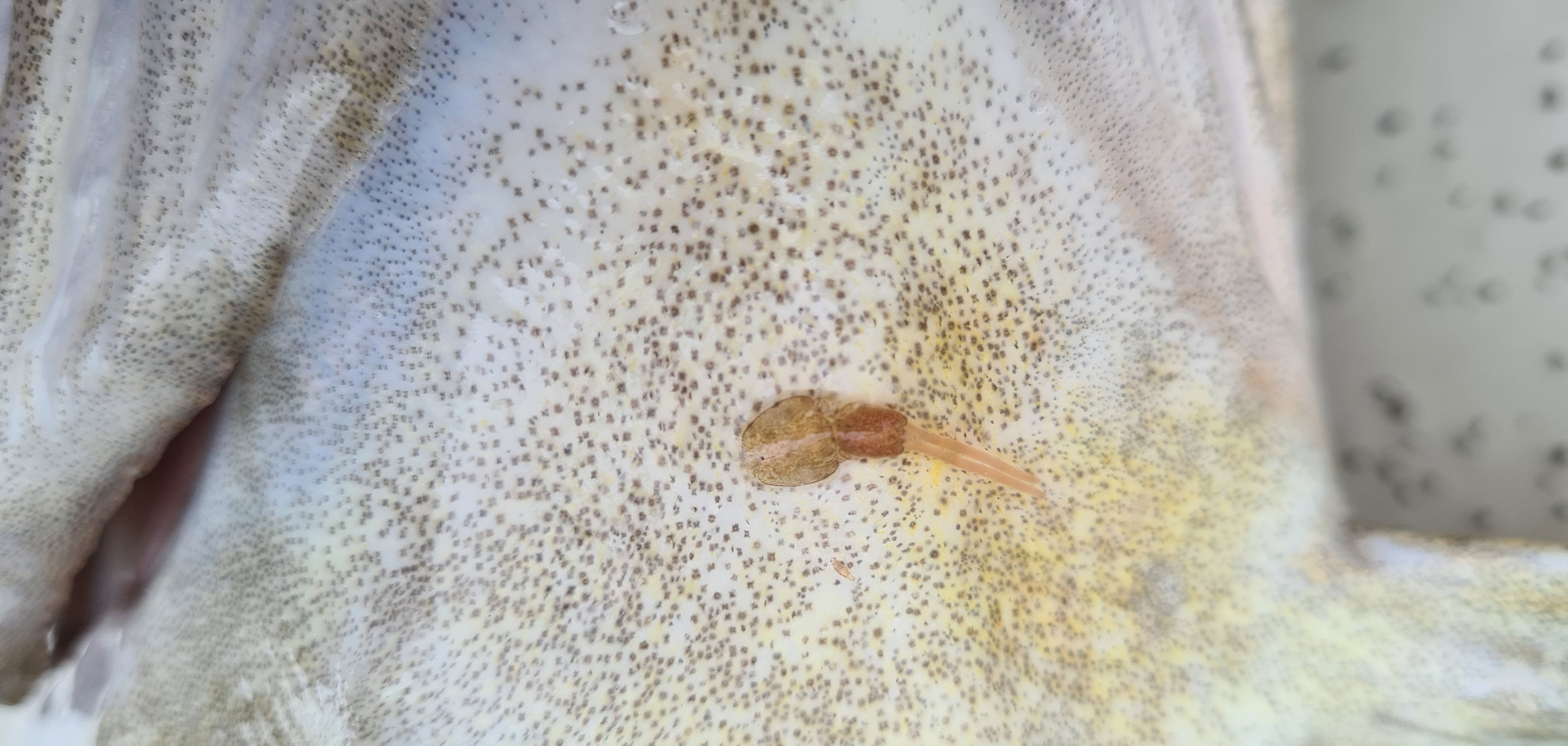Sea lice: Caligus curtus and Caligus elongatus

Three fish lice commonly found in Norwegian waters: Cod lice (Caligus curtus) on the left (female and male), salmon lice (female and male) and Caligus elongatus (female with eggs and male). In the case of cod lice, the male is the largest, while in the other two species female specimen are larger.
Photo: Lars HamreMany fish can be infested with lice, which as a group can be called fish lice. Some fish lice are species-specific and can only be found on one or a few fish species. An example of this is the salmon louse that only infects fish from the salmon family (salmonids). In Norway, this includes Atlantic salmon, sea trout and Arctic char, plus farmed rainbow trout.
Looks like a salmon louse
Similar to salmon lice which are only found on salmonid fish, cod lice can only be found on fish from the cod family.

These lice look relatively similar (compare this image with the image of all three lice species at the top), and looking at the fish host can often guide you to determine the louse species. If you want to be sure of what species of louse you have, you should take high quality pictures, preferably of adult individuals of both sexes. Remember to include something to indicate the size. Alternatively, the animal must be collected on alcohol and species determined using molecular methods.
Caligus elongatus is not a picky eater
But there are also fish lice that are not so picky in their choice of fish host. An example of this is the the fish louse, Caligus elongatus (in Norwegian known as “the Scottish louse”) that has been found on many different fish species including lumpsuckers, herring, capelin but also on fish from the cod and salmon families.
Caligus elongatus are smaller than both the salmon louse and the cod louse and is more common in northern Norway. Caligus elongatus also has a different behaviour than the salmon louse and can often be observed to transfer between fish.
For example, farmed fish may experience large transfers of Caligus elongatus from wild fish when schools of herring or capelin pass by farm sites.
Published: 17.12.2018 Updated: 07.07.2021

